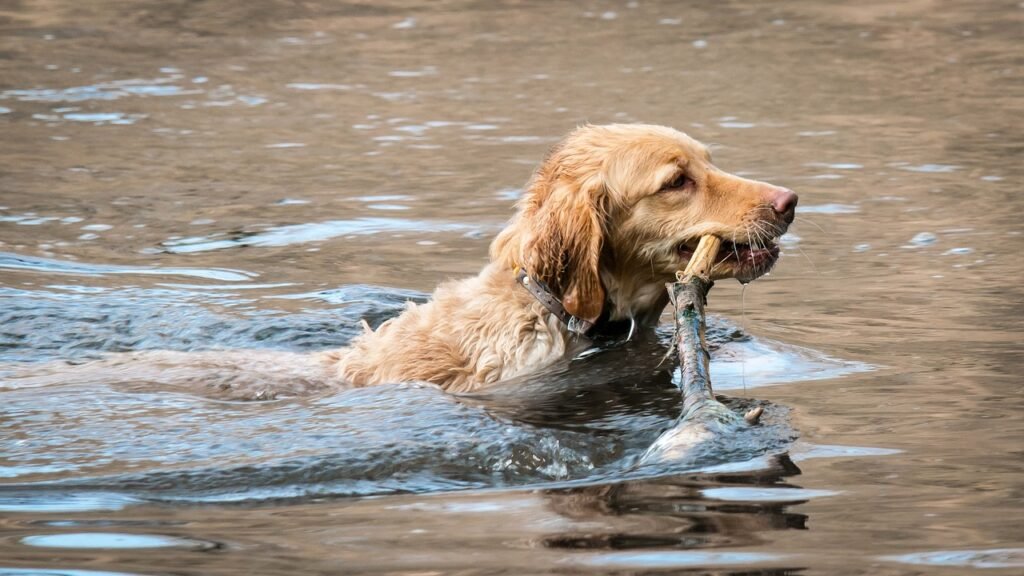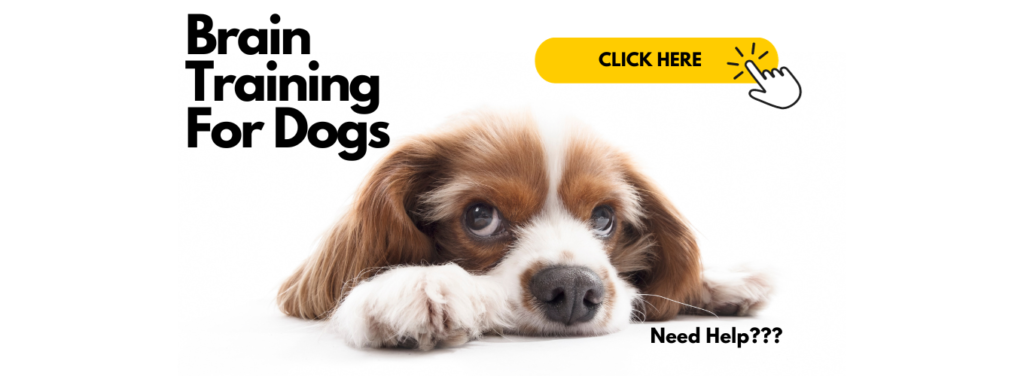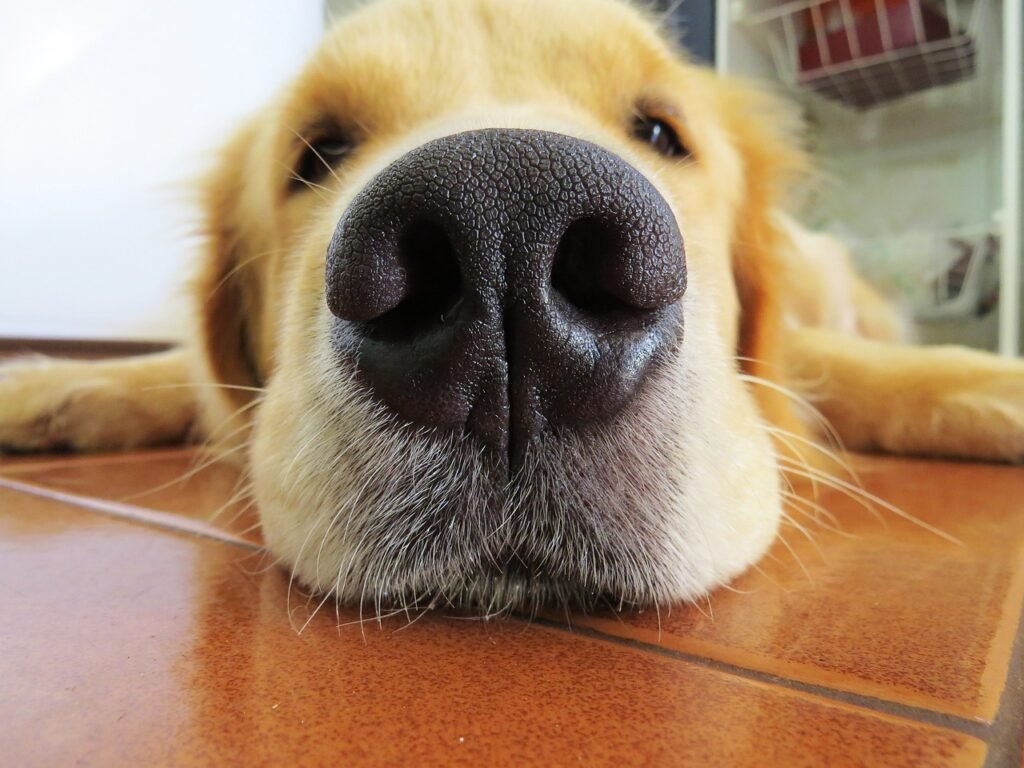
Do it Yourself Golden Grooming: Keeping Your Retriever Looking Its Best
Grooming plays a crucial role in maintaining the health and appearance of your beloved retriever. Regular grooming not only keeps your furry friend looking their best but also contributes to their overall well-being. In this article, we will explore the various aspects of DIY golden grooming, providing you with essential tips and techniques to help you keep your retriever in top shape. From establishing a grooming routine to tackling shedding and addressing common challenges, this guide will empower you to take charge of your retriever’s grooming needs and ensure they always look their very best. So let’s dive in and discover how you can become a pro at grooming your retriever!
1. Introduction: The Importance of Grooming for Retrievers
When it comes to grooming, retrievers deserve some extra pampering. These golden beauties have luxurious coats that require regular maintenance to keep them looking their best. Grooming isn’t just about vanity, though. It’s also essential for your retriever’s overall health and well-being. So grab your brush, put on your spa playlist, and let’s dive into the world of DIY golden grooming!
1.1 Benefits of Regular Grooming
Regular grooming sessions offer a plethora of benefits for your beloved retriever. First and foremost, it helps maintain a clean and healthy coat by removing dirt, debris, and those oh-so-delightful outdoor scents they love rolling in. Grooming also helps prevent matting and tangling, which can be uncomfortable for your furry friend. Additionally, it allows you to keep an eye out for any skin issues or abnormalities that may require attention.
2. Equipment and Supplies Needed for DIY Grooming
Now that you understand the importance of grooming, let’s gather our grooming artillery. Fear not, you won’t need a whole pet salon in your bathroom. Just a few essential tools will do the trick.
2.1 Essential Grooming Tools
First things first, invest in a good quality grooming brush that is suitable for your retriever’s coat type. Look for one with medium to long bristles that can easily glide through their luscious locks. You’ll also need a sturdy comb to tackle any stubborn tangles or matting that may occur.
2.2 Selecting the Right Brushes and Combs
When it comes to brushes and combs, remember that not all are created equal. For retrievers, slicker brushes and undercoat rakes work wonders in removing loose fur and preventing matting. A dematting tool can also come in handy for those extra challenging tangles.
2.3 Choosing the Appropriate Shampoos and Conditioners
Now, let’s talk about the holy grail of grooming – shampoos and conditioners. Look for gentle, hypoallergenic formulas that won’t irritate your retriever’s sensitive skin. Opt for shampoos that are specifically designed for dogs and free of any harsh chemicals. And hey, if you want to splurge on a fabulous conditioner to give your retriever’s coat that extra shine, go for it! They deserve a little extra pampering, don’t they?

3. Establishing a Grooming Routine: Bathing and Brushing Techniques
With your grooming tools by your side, it’s time to establish a grooming routine that will keep your retriever looking fabulous. Let’s start with the basics – bathing and brushing.
3.1 Frequency of Baths for Retrievers
Retrievers are moderately low-maintenance when it comes to bathing. Aim for a bath every 4 to 6 weeks, or whenever your furry friend decides to play in a mud puddle and turns into a walking dirt ball.
3.2 Step-by-Step Bathing Process
When it’s bath time, make sure to use lukewarm water and thoroughly wet your retriever’s coat. Massage the shampoo gently into their fur, making sure to avoid their eyes and ears (unless you enjoy the sound of their disapproval). Rinse your pup thoroughly to remove all traces of shampoo, then repeat the process with the conditioner for that spa-like experience.
3.3 Proper Brushing Techniques for Retrievers
After your retriever’s luxurious bath, it’s time to conquer the art of brushing. Start by removing any tangles or matting with your comb, then switch to the slicker brush to remove loose hair and distribute natural oils throughout the coat. Remember to brush gently to avoid any discomfort. And hey, if your retriever starts to resemble a fluffy cloud, you’re doing it right!
4. Maintaining Healthy Skin and Coat: Tips for Shampooing and Conditioning
Now that you’ve mastered the basics, let’s dive deeper into the world of skin and coat care for your shimmering retriever.
4.1 Understanding Your Retriever’s Skin and Coat Needs
Retrievers have a double coat that keeps them cozy in the winter and, let’s face it, stylish all year round. However, this luxurious coat requires proper care to ensure optimal skin and coat health. Understand your retriever’s specific needs and adapt your grooming routine accordingly.
4.2 Choosing the Right Shampoo for Skin and Coat Health
When it comes to shampoo, consider the needs of your retriever’s skin and coat. Look for shampoos that are formulated to promote healthy skin and coat, with ingredients like oatmeal or aloe vera to soothe any irritations. Avoid shampoos with excessive fragrances or harsh chemicals that may cause dryness or allergies.
4.3 Conditioning for Optimal Coat Hydration and Shine
Conditioning is the secret sauce to a retriever’s luscious locks. Choose a conditioner that is specifically formulated for dogs and designed to moisturize and nourish their coat. Massage it into their fur, let it do its magic for a few minutes, then rinse thoroughly. Your retriever will thank you with a coat that shines brighter than the sun!
Now that you have the tools, knowledge, and insider tips, you’re ready to tackle the world of DIY golden grooming. Remember, grooming is not just about keeping your retriever looking like a superstar, but also about showing them some love and care. So go ahead, channel your inner doggy hairstylist, and let those golden locks shine!ifying and Treating Mats and Tangles
5. Tackling Shedding: Techniques for Controlling and Managing Fur

5.1 Understanding the Shedding Cycle of Retrievers
Ah, shedding – the constant battle that every retriever owner is familiar with. Retrievers have a double coat, which means they shed a lot. Understanding their shedding cycle can help you better manage the fur explosion that seems to cover every surface in your home.
Retrievers typically shed twice a year: in the spring and fall. During these periods, they lose their old hair to make way for new growth. Shedding can last for several weeks or even months, so be prepared for some serious fur flying around.
5.2 Tips for Minimizing Shedding
While you can’t completely stop your retriever from shedding, there are a few things you can do to minimize the amount of fur that ends up on your clothes, furniture, and food (yes, it somehow manages to find its way into everything).
First, ensure your retriever is on a healthy diet. Proper nutrition helps promote a healthy coat and minimizes excessive shedding. Secondly, regular grooming and brushing sessions will help remove loose hair before it has a chance to spread throughout your house. Finally, keeping your retriever hydrated and providing a stress-free environment can also help reduce shedding.
5.3 Proper Brushing and Fur Removal Methods
Now that you’ve accepted that shedding is an inevitable part of owning a retriever, let’s talk about the most effective methods to keep the fur situation under control.
Invest in a good quality deshedding tool or slicker brush specifically designed for double-coated breeds. These tools are your secret weapons against the fur invasion. Regularly brush your retriever’s coat, paying extra attention to areas prone to matting, such as behind the ears and under the legs.
When it comes to removing loose fur, be prepared to embrace a certain level of chaos. Brush outside if possible or use a designated area that’s easy to clean. And remember, vacuum cleaners are your best friends in the battle against fur tumbleweeds.
6. Nails, Ears, and Teeth: Proper Care and Maintenance

6.1 Nail Trimming and Maintenance
Long nails can be uncomfortable for your retriever and can even lead to injuries. Regular nail trimming is essential for their health and well-being. However, unless you have some experience, nail trimming can be a daunting task.
Start by using a pair of dog-specific nail clippers and trim a small amount off the tip of each nail. Be careful not to cut too close to the quick, as it can cause bleeding. If you’re unsure about how short to trim, consult your vet or a professional groomer for guidance.
If the thought of trimming your retriever’s nails is too nerve-wracking, consider having a professional groomer or vet handle the task for you. It’s better to be safe than sorry!
6.2 Cleaning and Caring for Retriever’s Ears

Retrievers are prone to ear infections due to their floppy ears and the accumulation of moisture and debris. Regular ear cleaning is crucial to prevent discomfort and potential health issues.
Use a dog-specific ear cleaning solution and a cotton ball to gently clean the visible parts of your retriever’s ears. Avoid inserting anything deep into the ear canal, as it can cause damage. If you notice any redness, swelling, or a foul odor, consult your vet as it may be a sign of an infection.
6.3 Dental Care Tips for Retrievers
Just like humans, retrievers need proper dental care to maintain healthy teeth and gums. Neglecting dental hygiene can lead to bad breath, gum disease, and even tooth loss.
Regular teeth brushing is the gold standard when it comes to dental care. Use a dog toothbrush and toothpaste specifically formulated for dogs. Start slowly, gradually introducing the toothbrush to your retriever’s mouth, and make it a positive experience with treats and praise.
In addition to brushing, providing dental chews and toys can help keep your retriever’s teeth clean and reduce plaque and tartar buildup.
7. Professional Touches: Trimming and Styling Techniques for Retrievers
7.1 Safe and Effective Trimming Methods
While retrievers are known for their natural and effortless beauty, there may be times when they need a little trim or touch-up. Whether it’s to tidy up their paws, tail, or face, it’s important to approach trimming with caution and the right tools.
Invest in high-quality grooming scissors or clippers specifically designed for dogs. If you’re unsure about how to trim your retriever’s coat, consult a professional groomer for guidance or consider taking your furry friend to a reputable grooming salon.
Remember, less is often more when it comes to trimming. Opt for subtle changes that enhance your retriever’s natural beauty without compromising their coat’s functionality.
7.2 Styling Tips for Retrievers
Who says retrievers can’t have a little style and flair? While they may not need the same elaborate hairstyles as some other breeds, you can still have some fun with their appearance.
Experiment with different accessories like bandanas or bowties to add a touch of personality to your retriever’s look. Just make sure to choose accessories that are safe, comfortable, and won’t interfere with their movement or vision.
8. Troubleshooting Common Grooming Challenges: Dealing with Mats, Tangles, and Odors

8.1 Identifying and Treating Mats and Tangles
Mats and tangles can turn even the most patient retriever into a squealing, tug-of-war opponent. Prevention is key when it comes to managing these furry nuisances.
Regular brushing helps prevent mats and tangles from forming. However, if you do encounter them, proceed with caution. Use a detangling spray or a slicker brush to gently work through the tangled fur. In severe cases, you may need to carefully trim out the mat. If you’re unsure or uncomfortable doing it yourself, seek professional help to avoid any accidental fur mishaps.
8.2 Eliminating Unpleasant Odors
Retrievers are active dogs who love to explore, roll in things they shouldn’t, and generally find ways to make themselves smell less than pleasant. But fear not, the stench can be conquered!
Regular bathing with a dog-specific shampoo can help keep your retriever smelling fresh. However, be careful not to overdo it, as excessive bathing can strip their coat of essential oils.
If your retriever has a particularly odorous encounter, try using a dry shampoo in between baths to freshen them up. And remember, a little bit of “eau de retriever” is a small price to pay for their endless love and loyalty.
Now armed with these golden grooming tips, you’ll be able to keep your retriever looking their best without breakingIn conclusion, by taking the time to groom your retriever regularly, you are not only enhancing their physical appearance but also promoting their overall health and happiness. With the right equipment, knowledge, and techniques, you can confidently tackle the grooming process at home. Remember to establish a routine, address specific grooming needs, and seek professional help when necessary. By following the tips and advice provided in this article, you can keep your retriever looking its absolute best while strengthening the bond between you and your furry companion. So, go ahead and embark on your golden grooming journey – your retriever will thank you for it!
FAQ
1. How often should I groom my retriever?
The frequency of grooming your retriever depends on their specific coat type and lifestyle. Generally, a retriever should be groomed at least once every 4-8 weeks. However, regular brushing and maintenance should be done weekly to prevent matting and keep their coat in good condition.
2. Can I use human shampoo on my retriever?
No, it is not recommended to use human shampoo on your retriever. Human shampoos are formulated for the pH level of human skin, which differs from that of dogs. Instead, opt for a high-quality, dog-specific shampoo that is gentle on your retriever’s skin and coat.
3. How can I prevent my retriever’s ears from getting infected?
To prevent ear infections, it’s important to regularly clean your retriever’s ears and monitor for any signs of redness, swelling, or discharge. Use a dog-specific ear cleaner and gently wipe the outer ear with a soft cloth or cotton ball. Avoid inserting anything into the ear canal and consult your veterinarian if you notice any concerning symptoms.
4. Should I attempt professional-level grooming techniques at home?
While it’s great to take care of your retriever’s basic grooming needs, some advanced techniques such as intricate trimming and styling are best left to professional groomers. They have the expertise and experience to ensure the safety and aesthetic appeal of your retriever’s coat. If you are unsure, it’s always best to consult a professional groomer for specialized grooming services.

